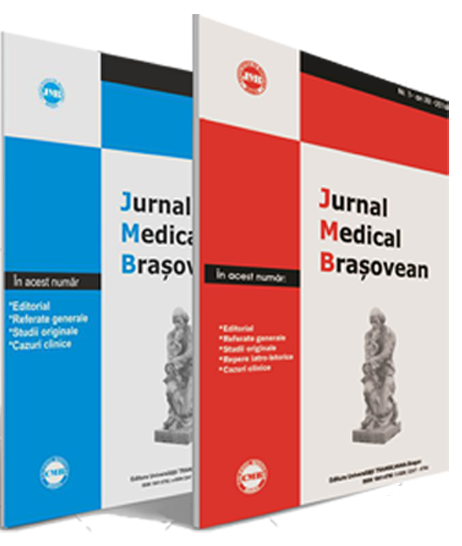Tulburările de somn asociate bolii Parkinson | [Sleep disorders associated with Parkinson’s disease]
DOI:
https://doi.org/10.31926/jmb.2021.1.12Keywords:
Parkinson’s disease, sleep disorders, insomnia, restless legs syndrome, REM sleep behaviour, polysomnographyAbstract
Abstract: Introduction: In patients with Parkinson’s disease (PD), quality of life is significantly affected by sleep disorder. Insomnia, excessive daytime sleepiness, restless leg syndrome (RLS), and REM-sleep behavior disorder (RBD) are considered common sleep disorders in PD patients. Objective: The aim of this review article is to synthesize the main characteristics, diagnostic tools, and therapeutic options of the sleep disorders associated with PD. Discussions: We mention some of the main causes of these sleep disorders in PD: neurodegenerative processes which affect different brain circuits, antiparkinsonian drugs, and concomitant medication (such as antidepressants) as well as other non-motor symptoms or comorbidities. In order to diagnose sleep disorders, we can use several validated questionnaires used in regular screening, such as the Insomnia Severity Index (ISI), Epworth Sleepiness Scale (ESS), Pittsburgh Sleep Quality Index, Scales for Outcomes in Parkinson’s Disease-SLEEP-Daytime Sleepiness, PD Sleep Scale and IRLSSG Scale (IRLS). Conclusions: We recommend the use of these questionnaires in combination with a detailed medical history. In most cases, the management of sleep disorders in PD patients starts with an optimized antiparkinsonian therapy, followed by a specific treatment of the sleep disturbances.
Rezumat
Introducere: La pacienții cu boala Parkinson (BP), calitatea vieții este afectată semnificativ de tulburările de somn. Insomnia, somnolența diurnă excesivă, sindromul picioarelor neliniștite și tulburarea de comportament a somnului REM sunt considerate tulburări de somn frecvente la pacienții cu BP. Scop / Obiectiv: Scopul acestui articol de tip sinteză este de a prezenta principalele caracteristici, instrumente de diagnostic şi opţiuni de tratament ale tulburărilor de somn asociate cu BP. Discuții: Menționăm câteva dintre principalele cauze ale acestor tulburări de somn în BP: procesele neurodegenerative care afectează diferite circuite cerebrale, medicamentele antiparkinsoniene și medicația concomitentă (cum ar fi antidepresivele), precum și alte simptome nonmotorii sau comorbidități. Pentru a diagnostica tulburările de somn, putem folosi mai multe chestionare utilizate în screening, cum ar fi Insomnia Severity Index (ISI), Epworth Sleepiness Scale (ESS), Pittsburgh Sleep Quality Index, Scales for Outcomes in Parkinson's Disease-SLEEP-Somnolență diurnă, PD Sleep Scale și IRLSSG Scale (IRLS). Concluzii: Recomandăm utilizarea acestor chestionare în combinație cu un istoric medical detaliat. În majoritatea cazurilor, gestionarea tulburărilor de somn la pacienții cu BP începe cu o terapie antiparkinsoniană optimizată, urmată de un tratament specific al tulburărilor de somn.



